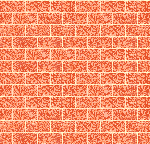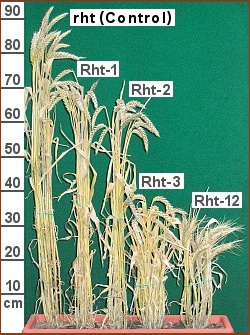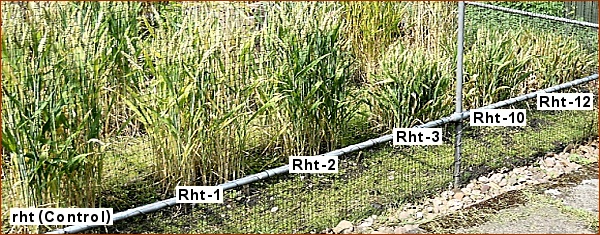 |
|||
 |
Role of Genes in Modern Bread Wheat | ||
 |
 |
||
 |
|||
| Wheat was
originally a very tall plant, as seen in "The
Corn Harvesters" painted by Pieter Bruegel the Elder in 1565.
That shows wheat growing up to the heads of the men harvesting it with
scythes. After the discovery of shorter |
|||
| The picture on the
left shows the wheat variety "Mercia" with a control and four
lines with different Rht genes. The rht (Control), without height reducing genes, is used as the control for height comparison. Rht-1 (Rht-B1b) and Rht-2 (Rht-D1b) typically produce semi-dwarf plants, about two-thirds the height of the control. Rht-3 (Rht-B1c), Rht-10 (Rht-D1c) and Rht-12 typically produce dwarf plants one-third the height of the control. Plants with the Rht-12 gene also have awns on the ears. The awn and Rht genes are believed to be located very close together on the same chromosome and wheat geneticists have been unable to separate the two genes. Most wheat varieties now include height reducing genes, usually Rht-1 or Rht-2 to control the height of the plants. |
|||
| Additional information on the Role of Genes is available as a 'pdf' file. Use 'back' to return to this page. | |||